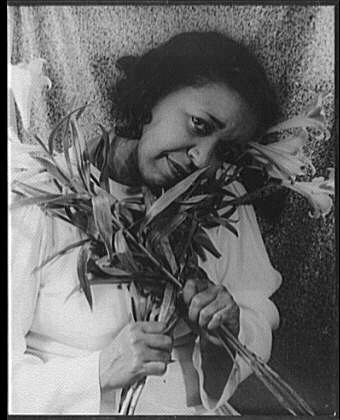The great
jazz trumpeter, Dizzy Gillespie, was one of the musicians at the forefront of
the development of be-bop music in the Fifties. Gillespie was born John Birkes
Gillespie in Cheraw, South Carolina, in 1917. Gillespie earned the moniker,
“Dizzy,” for his ebullient personality and antics while performing.
After
hearing the great Roy Eldridge on the radio as a child, Gillespie decide then
and there that he, too, wanted to be a jazz trumpeter. Gillespie got his start
in New York City, in 1935, playing in the bands of Teddy Hill and Edgar Hayes.
It was with the Teddy Hill Orchestra that Gillespie would make his first
recording, “King Porter Stomp.” Gillespie stayed with Hill for one year and
then freelanced with several bands for a while before finally winding up in Cab
Callaway’s Orchestra in 1939. Calloway would fire Gillespie three years later
following an altercation between the two men.
In 1943, Gillespie
would join Earl Hines band which featured Charlie Parker and was beginning to create
a new music which would become bebop. From there, it was on to the Billie
Ekstine band, which also featured Parker. He would later leave the Ekstine band
because he wanted to play in a smaller ensemble.
In the
mid-Forties, Gillespie, Parker and other jazz musicians such as Max Roach, Bud
Powell, Thelonious Monk, and Kenny Clark would meet at clubs such as Minton’s
Playhouse and Monroe’s Uptown to jam and experiment. It was at these jams that
bebop was born.
Gillespie
would become a member of the “Quintet,” the legendary be-bop supergroup formed
in Toronto in 1953, with Parker, Powell, Charles Mingus and Max Roach.
Following his one-show tenure with the Quintet, Gillespie would form his own
Dizzy Gillespie Orchestra.
Among the
best of the classic sides that Gillespie recorded in the Forties and Fifties
are: “A Night in Tunisia,” “Salt Peanuts,” “Hot House,” “Manteca,” “Perdido,”
and “Night and Day.”
Gillespie’s
best albums begin with the Quintet. His “Salt Peanuts” from the album “Live at
Massey Hall” is perhaps the best moment of many brilliant moments on that live
recording of the Quintet’s only show. Other fine Gillespie albums include,
“Dizzy In Paris” (1953), “For Musicians Only” (1958), ”Gillespiana” (1960),
“Groovin’ High” (1953).
After Gillespie
had had his fill of bebop, he became interested in Afro-Cuban music. Gillespie
died in 1993.
















